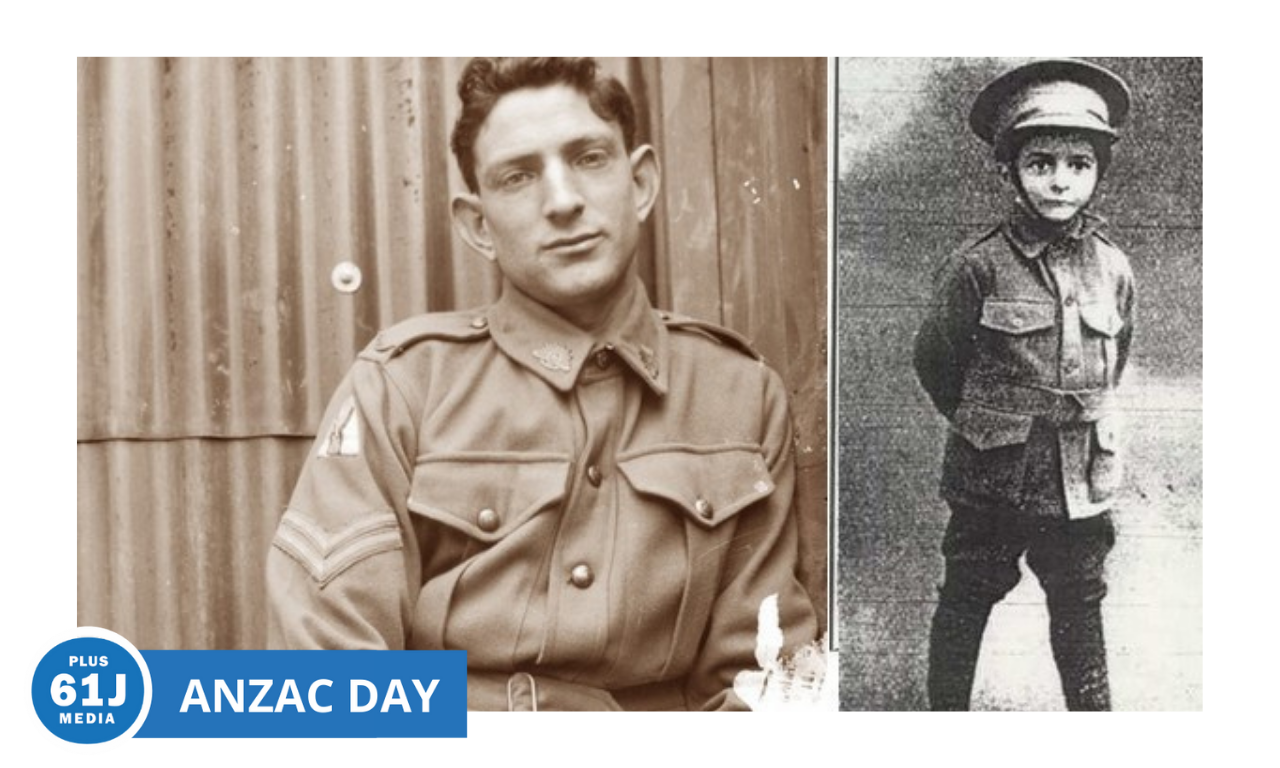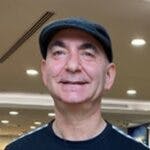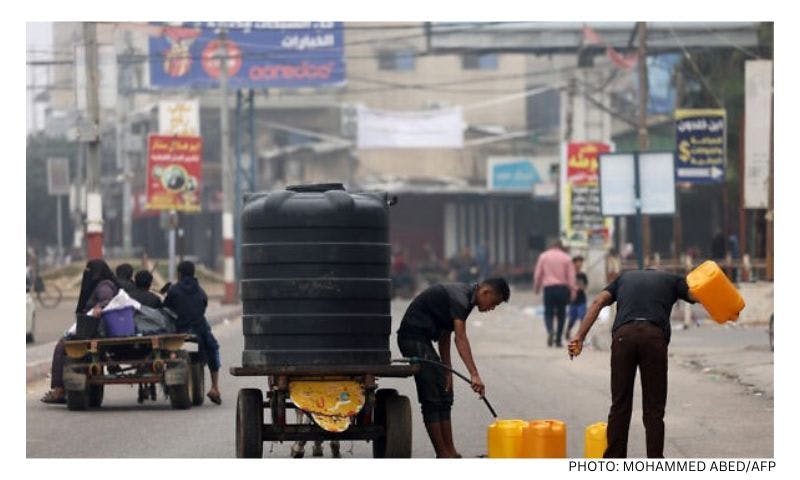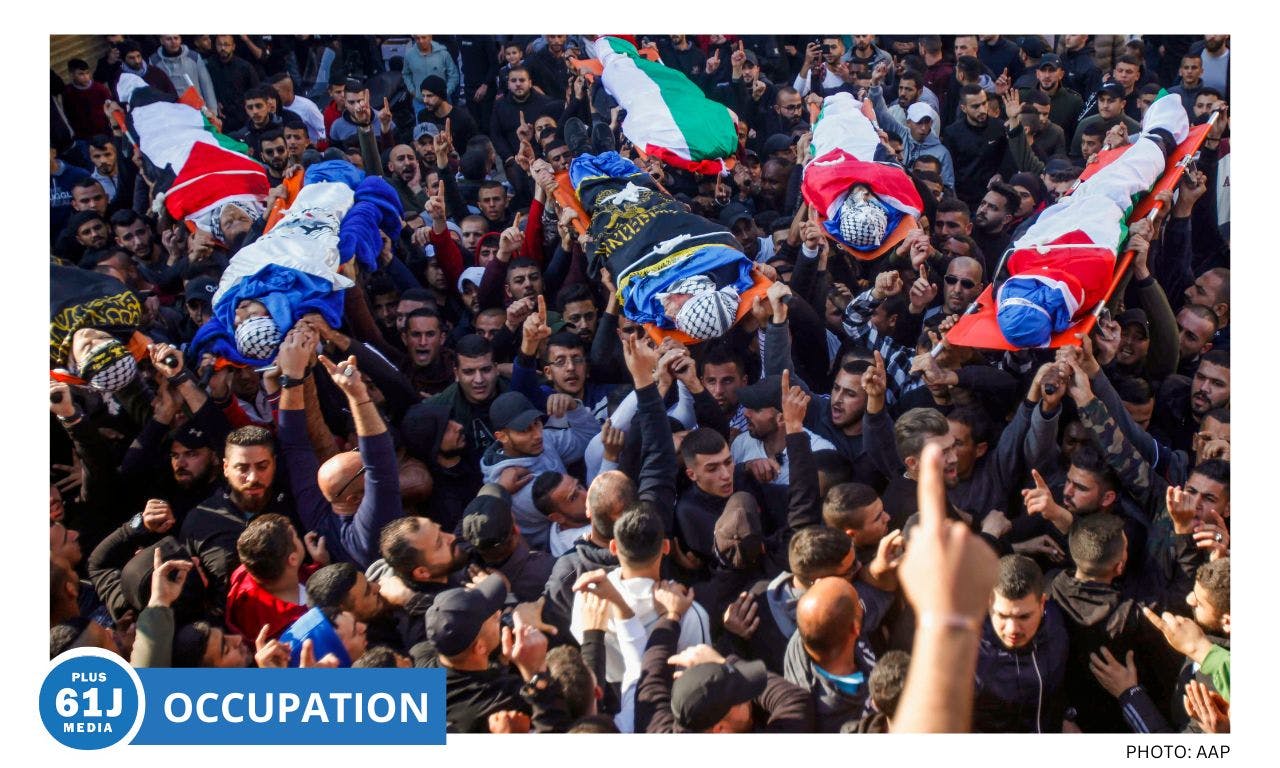Published: 22 April 2022
Last updated: 4 March 2024
In this extract from his book Jewish Anzacs, MARK DAPIN tells the stories of the Jewish soldiers who served and died at Gallipoli
IN APRIL 1915 the Anzacs left Egypt, sailing for Turkey. Along with larger numbers of British, French and Indian troops, they were despatched to open up another front against the enemy and secure the Russian navy’s access to the Black Sea via the straits of the Dardanelles and Bosphorus. The Gallipoli Peninsula was also to be a staging point for the eventual invasion of Constantinople, which lay about 270 kilometres to the north-east. Like so much of Turkey, the area had a Jewish history.
The peninsula’s port town of Gelibolu (Gallipoli) itself had been home to a sizeable Jewish population since at least the thirteenth century although the old Jewish Quarter, with its two nineteenth-century synagogues, had been destroyed by an earthquake in 1912. But the Anzacs never reached Gallipoli town. The assault force waded ashore at a nameless bay between Ari Burnu and Hell Spit, later known as Anzac Cove.
Captain Eliazar Margolin, a Russian-born Jewish officer from Collie, Western Australia, arrived at Anzac on that first day, as did Samuel Weingott, a Sydney-born tailor’s cutter; Sidney Diamond, a 21-year-old piano tuner who received the Distinguished Conduct Medal for his actions in the Gallipoli landings; and Harley Cohen, a 21-year-old Sydney clerk who had joined the 4th Battalion AIF on August 17, 1914.
Harley Cohen had been driven to enlist by a great sense of urgency. Men were allotted service numbers according to the order in which they arrived at the recruiting office: Cohen was number 27. He charged onto the beach in the first landing at nine o’clock in the morning of April 25, and “rushed through the scrub into the firing-line,” he said later.
“Men were dropping like skittles, and as an officer was yelling for someone with a knowledge of first aid and no one answered, I chipped in, and did a bit of it. When I’d bandaged up a few of the worst cases I resumed the job I went out there for, and that was to give the Turkish first-aiders some work to do.
“The Turks seemed to have screened themselves so thoroughly that we could not see them, and volunteers were called to go out and locate them.” Cohen and half a dozen of his comrades crawled out in search of the enemy.
The Turks seemed to have screened themselves so thoroughly that we could not see them, and volunteers were called to go out and locate them.
“It was night,” he wrote home to his father, “and we did not have much chance of returning, so we shook hands with our nearest pals and set out.” Cohen said, “Curiously enough, though the ground was continually swept by machine guns, not one of us was hit.”
He wrote, “We reached the hill, from which we drove off a few Turks, using the bayonet freely on them, but we had then to lie down, as we had drawn the fire of the Indians, who, with the Turks, imagined we were the enemy, but we came through.”
He said, “When we gained a bit of a ridge, where we could observe things, we found we had no water. I was sent back for it, and to report, and then returned to the observation point. On the way I noticed one of our wounded, who must have been left as the first crowd of our boys swept forward, in that wonderful charge, directly on landing. I could not pick him up then, as my mates needed the water badly, but coming back my mates picked him up, and got him safely into our lines, in spite of the fact that by rising and carrying him they faced almost certain death.”
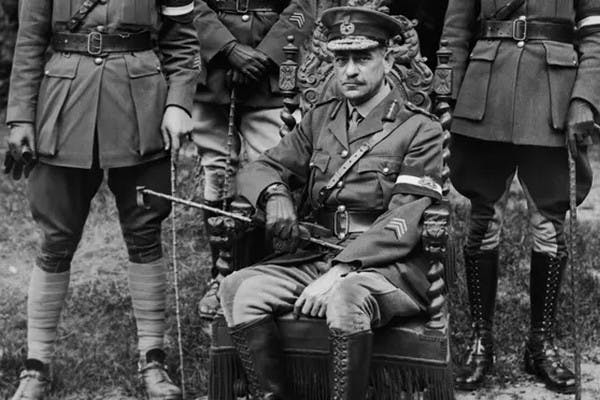
The first Jewish Anzac killed at Gallipoli would seem to have been 24-year-old Private Godfrey Sherman, 9th Battalion, a banker from Woollahra, New South Wales, who went missing on April 25 and whose body was never found. His parents were later informed by Sherman’s returned comrades that their son was killed by shellfire. Sherman, whose parents had married in the Great Synagogue Sydney, had enlisted as a Roman Catholic, which was not uncommon for a Jewish soldier.
In addition, however, a crucifix and rosary beads were listed among his belongings, which were perhaps keepsakes from his girlfriend, a Miss K Cleveland-Coxe of Bondi, whom he had listed as his next of kin and whose existence he had hidden from his family.
Sherman’s father had to sign a number of statutory declarations attesting that he was actually related to his late son, a process which clearly caused him pain. But the suffering was not over for the Sherman family. Godfrey’s younger brother Leslie (who enlisted as a Jew) was to die at Ypres in 1917. None of the possessions of either man was ever returned to their father.
Corporal Lionel Marks, a 23-year-old clerk from Carlton, Victoria, who was Jewish but enlisted in the 1st Battalion as “C of E”, also died on the first day or shortly afterwards. The army’s inquiry heard he had his head blown off by a Turkish shell. (Lionel’s brother, Alfred Marks, a private in the British Army, was also killed in action in the Dardanelles.)
On April 26, Colonel John Monash arrived on the beaches. Samuel Weingott had become separated from his battalion and attached himself to the 5th Battery, which engaged the enemy for the whole day. “Their guns do awful damage,” he told his diary. “The biggest majority of our chaps seem to be wiped out.” He heard that his older brother Alexander (“Alec”) had been wounded, then Samuel was “nearly killed through a falling cliff”.
On April 30 he wrote from rest camp, “snipers still keep going and bag a lot of chaps on the beach. An Indian caught one and cut his head off.”
I thought they had got me then, Silas; what shall I do? I mustn’t let the boys see I have been hit.
On April 27 Captain Eliazar Margolin was in the thick of the fighting. His signaller, the artist Ellis Silas, wrote in his diary, “There is a pale moon – any minute we are expecting the enemy to rush the trenches – we have no reserves. I ask Captain Margolin to let me make his dugout more secure, as every time he has to give a message, he has to expose himself – after some persuasion he permits me to do so, though at the same time asking me if I had completed my own dugout.
“However, after having made his position apparently secure and arranged the bushes the better to make it less conspicuous, I had no sooner vacated the position and he had got into my place, than he was struck in the mouth by a bullet. “Good God!” I exclaimed, “have they got you Sir?”
“My God!” he yelled, “they have caught me at last.” But, after the first shock, he said to me, “I thought they had got me then, Silas; what shall I do? I mustn’t let the boys see I have been hit.” However, I said he had better have it attended to. Just at that moment a shot struck the parapet close to my face; I thought my turn had come; although it was nearly dark the snipers seemed well on to this particular dugout.
“A body was lifted out of the trench; I thought it was a wounded man; I asked if he was dead – then I saw the top of his head – oh God! The Turks seemed to be going to rush us – Margy grabbed hold of a rifle; I asked him if he was going to use it – “My word, yes,” he said, “I want something I can fight with.”
Harley Cohen wrote home from Gallipoli after seven days” fierce fighting: “Most of my chums are dead but my dearest pal is still with me, alive and unwounded, like myself.” Every day in the trenches brought a fresh horror for the living. On May 6 the corpses around Samuel Weingott’s trench began to smell.
Then Weingott was “very nearly blown to pieces by the enemy’s heavy gun fire”. In the days that followed, a sergeant major had his head blown off while shaving; two shells landed in Weingott’s trench and one buried itself in the parapet alongside Weingott but did not explode.
“The other blew one man to pieces, wounded one.” Then the “Armoury Sergeant has his brains blown out by shrapnel whilst inspecting trenches … Mate of mine shot through the heart whilst asleep … Shell explodes in our trench, killing or seriously wounding Captain Hill … Terrible sights. Men alongside of me blown to pieces … Many lose their nerves. Trenches blown to pieces. Work all night fixing them up … Enemy come right on top of trenches but repulsed. Hundreds lying dead outside our trench.”
The letters of Monash give a lyrical account of trench life in May. He sat “within a hundred yards of the firing line” where “the rattle of musketry, and the boom of cannon” never ceased, crouched in his ramshackle headquarters between points the Anzacs called Pope’s Hill and Courtney’s Post, in front of the depression that became known as Monash Valley.
“The noises of the battlefield are numerous and varied,” he wrote, “and after a little while it is quite easy to distinguish the different sounds. The bullet which passes close by (say within ten or twenty feet) has a gentle purring hum, like a low caressing whistle, long drawn out. The bullet which passes well overhead, especially if fired from a long range, has a sharp sudden crack like a whip, and really feels as if it is very close. Our own rifle-fire listened to, of course, from behind the firing-line or in it, sounds like a low rumble or growl.
The noises of the battlefield are numerous and varied and after a little while it is quite easy to distinguish the different sounds; the bullet which passes close by has a gentle purring hum.
Arthur Abraham (aka Adrien) Jacobs, the eldest of four Jewish brothers from South Australia who fought in World War One, had also relaxed into the deadly routine. “Compared with the first week,” he wrote home from Gallipoli on May 12, “what we are now experiencing is a pleasant holiday. On the first Sunday we suffered hell, and the following Monday and Tuesday were about as bad; but the enemy are now apparently tired, and only now and again do they give us anything to do.
They send us plenty of shrapnel, however, but we are fairly accustomed to the whistling of the shells, and know how to dodge. No one seems to care a hang for rifle bullets. At the moment of writing – the platoon to which I belong is in the firing line – shrapnel is bursting over us; but nobody is taking any particular notice of it. It is also raining slightly.”
Jacobs, a former journalist with the Register in South Australia, had enlisted in the 10th Battalion at the first opportunity. His service number was 66. The Jacobs boys were so desperate to go to war that both Arthur and the next oldest brother Solomon (aka Sullivan) William Jacobs enlisted in the 10th Battalion twice. David Jacobs went to Egypt, France and Belgium with the 27th Battalion and 5th Field Ambulance and was wounded in action.
The youngest brother, Emmanuel (aka Martin Edward) Jacobs served with the 32nd and 50th battalions but was under-age when he signed up at 16 and had to be sent home from France.
Every man at Gallipoli saw his share of death, but it was the troops of the Field Ambulance who bore witness to each mangled corpse and mutilated survivor. Harold Emanuel Collins, who was born in 1892 in Malvern, Victoria, but grew up in Paddington, New South Wales, had joined the AIF on August 15, 1914, and served as a stretcher-bearer at Gallipoli.
On May 5 Collins wrote in his diary, “We went up to the firing line at 6.30 pm to see if there was any wounded to bring down. Just as we got up to the top of the hill, we saw a doctor cutting the remaining shreds holding his left arm just below the shoulder. The poor beggar, only a lad, was screaming with agony while we tied a putty around the tops to stop the artery. My mate Joe Barnes took the arm away and buried it, the chap was conscious all the time.”
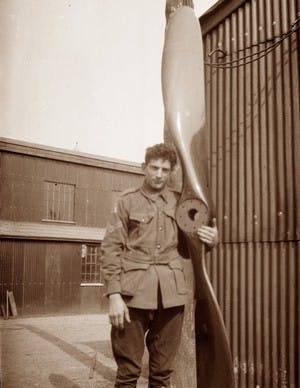
On May 19, “The Australians repelled an early morning attack on their right flank,” wrote Collins, “when the AMC went up to collect the casualties, they found about six wounded men in stretchers and about six men who could walk. There were three dead so it was not necessary to bring them down. While our squad was bringing a patient down, we had to go across an open space.
“The Turks evidently could see us and they sent six shells after us [and] we had to run for our lives … The poor beggar we had must have suffered as we ran with him. He was shot through the eye, and it came out of his left jaw.” During an armistice for the Turks to bury their dead, “Our stretcher-bearers took stretchers outside our firing line and went half-way to the Turks” trenches where there was white flags and they could not pass beyond them,” wrote Collins.
“Our men took the dead Turks (who were in a very decomposed condition) down to the half-way mark where the Turks had a big hole dug. We got some of our own men who had been lying there since the first Sunday. I went out and had a look around, it is a sight that I never want to see again.
“There was a sort of a natural trench coming to a point just in front of our trench, well there was a dead Turk on his hands and knees while at the bottom there was about 20. I suppose as they crawled up this slight incline they were shot. You could not walk two paces without encountering a dead Turk.”
Harry Weingott was already broken-hearted. Unknown to Samuel, Alec who was shorter, darker and broader than his brother Samuel, had joined up a month after him.
On May 27 a German submarine sank HMS Triumph in sight of the Australian troops, seventy-eight men drowned and Samuel Weingott read a burial service from his prayer book. Harold Collins saw it too. He wrote, ‘she sunk in ten minutes, settling down by one o’clock. She had a horrible list then she gradually [sank], gaining momentum as she went, until she was over altogether … I have seen dead men lying about by the hundred, have seen men’s arms and legs torn off but nothing has made me feel like crying as I did when I saw that stately and majestic old battleship go down.”
On May 29 Weingott wrote, “One shell burst in my face and although unwounded I was knocked out for a few minutes. My rifle was twisted beyond recognition.”
On June 1 Samuel Weingott was proud to be appointed lance corporal in charge of his section. The next day he heard his lieutenant say that he “would make a good NCO” because he “wasn’t at all afraid”. On June 5 Weingott lay dead, with a bullet in his belly. He had been wounded at Steel’s Post and died on board the hospital ship Sicilia. He was buried at sea, and as the army noted, he “especially asked not to receive a Christian burial”.
His father wrote a letter asking for his son’s death certificate. His ordinarily clear signature was smudged, as if his hand had become suddenly unsteady, or he had shed a tear onto his notepaper.
Harry Weingott was already broken-hearted. Unknown to Samuel, Alec was also dead. Alec, another tailor’s cutter, was shorter, darker and broader than his brother Samuel, and had joined up a month after him. He too had been shot in the stomach at Gallipoli, on April 26 after he had been ashore for only about two hours. He was evacuated to Alexandria, where he died in hospital. His father was spared few details.
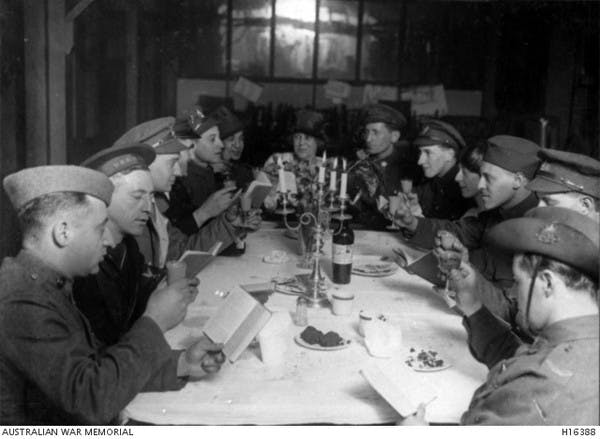
A Sergeant Kenward, who was attending Alec in hospital in Alexandria, wrote to tell him that, “We dressed his wounds (abdominal), but an operation was necessary to extract the bullets. Owing to weakness, the surgeons decided to wait a while. On May 2nd, he seemed to rally, and it was decided to operate, but I am sorry to say, his vitality could not stand the strain, and I decided to stay with him until the end, which occurred that night. He was buried with all the full rites of his religion the next day at Chatby Military Cemetery, Alexandria.”
Harold Collins wrote to Rabbi Cohen, “I was very sorry for Mr Weingott losing his two sons: I knew them both personally and we were often together over here.” On the battlefield Collins had found an arba kanfot. “It may have belonged to one of Mr Weingott’s sons, if so, I will only be too pleased to give it to him.”
Main image: Left: Harold Emanuel Collins served as a stretcher-bearer at Gallipoli and later on the Western Front (image courtesy Joolee Eadie/Edwards); right: Issacher Weingott, the six-year-old half-brother of Lance-Corporal Samuel Weingott, who died at Steel’s Post on June 5 (Trove/Sydney Mail, August 25, 1915)
